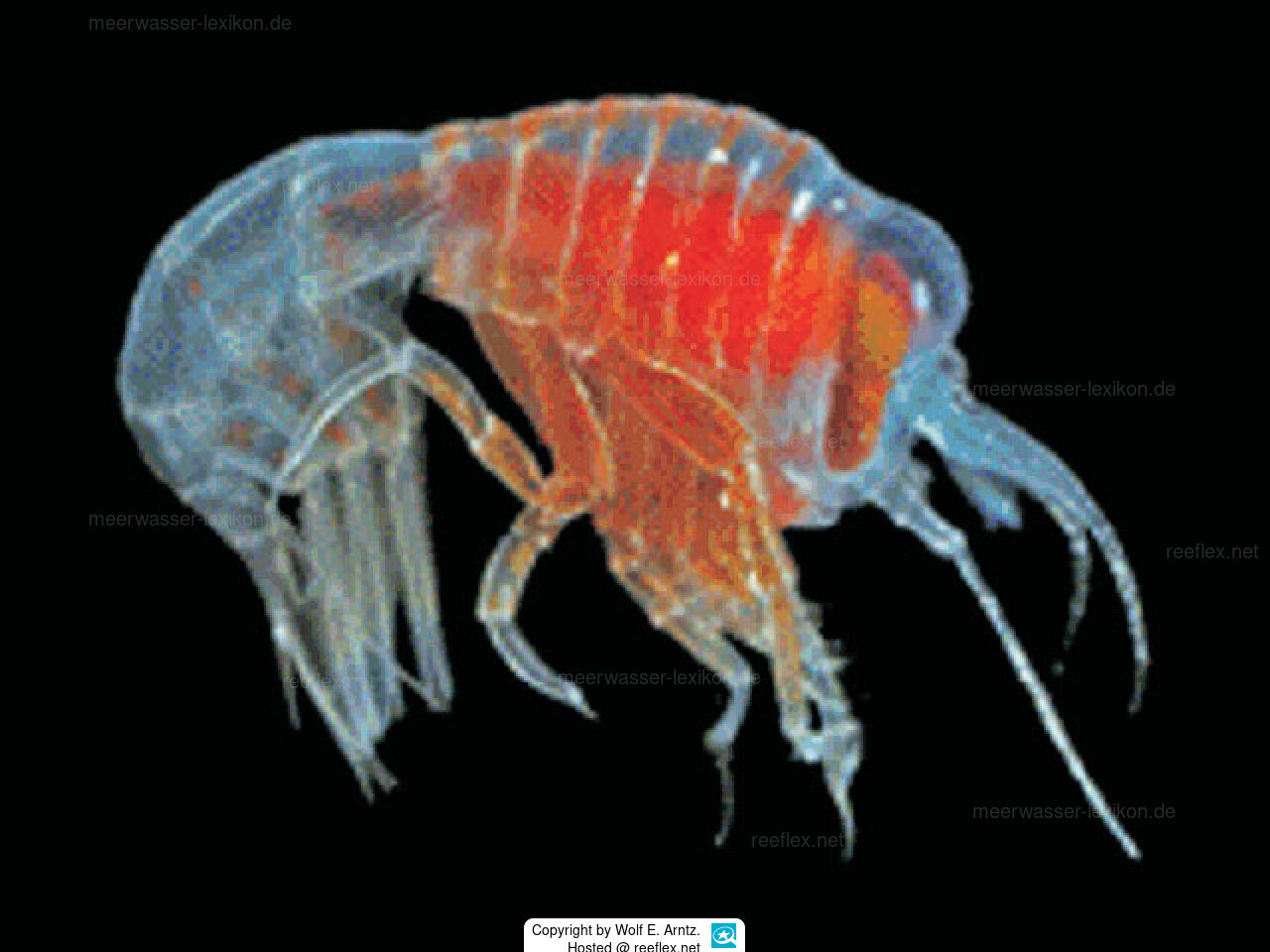Info
Members of the order Amphipoda are gonochorous and sexually dimophilic (males larger than females).
Males locate potential mates using their antenna to detect pheromones released by females; then the male rides or carries the female until she is ready to molt.
When the female is ready, the male thrusts the sperm into the marsupium and then releases the female.
A few hours later, the female releases her eggs into the marsupium for fertilization.
Life cycle: The eggs are hatched in the marsupium.
The eggs hatch into young, which remain in the sac for several days. Each species goes through a maximum of 20 molts, i.e. a life cycle of 1 year.
Hyperiella dilatata belongs to the zooplankton and is an extremely important component of the diet of seabirds and fish,
Humans must pay more attention to the fact that global warming, which is accompanied by an increase in ocean temperatures and has a lasting negative impact on marine fauna, must be stopped urgently, as it has a lasting negative impact on all living creatures within the food chain, and thus also on humans.
Very interesting and ingenious:
Biologists led by Dr. Charlotte Havermans of the Alfred Wegener Institute have observed that Hyperiella dilatata use Pteropods or sea snails, also called sea angels, to better protect themselves against predators with the help of the snails.
these sea snailsproduce deterrent chemicals to protect themselves from predators.
Some species of amphipods, such as Hyperiella dilatata, exploit this by piggybacking on winged snails to gain protection from predators.
There is no apparent benefit to the winged snails in this process; on the contrary, they starve because the legs of the psyllids hinder them from feeding.
See also; https://www.awi.de/ueber-uns/service/presse/archiv/archiv-detailansicht/entfuehrung-in-antarktischer-tierwelt.html
Males locate potential mates using their antenna to detect pheromones released by females; then the male rides or carries the female until she is ready to molt.
When the female is ready, the male thrusts the sperm into the marsupium and then releases the female.
A few hours later, the female releases her eggs into the marsupium for fertilization.
Life cycle: The eggs are hatched in the marsupium.
The eggs hatch into young, which remain in the sac for several days. Each species goes through a maximum of 20 molts, i.e. a life cycle of 1 year.
Hyperiella dilatata belongs to the zooplankton and is an extremely important component of the diet of seabirds and fish,
Humans must pay more attention to the fact that global warming, which is accompanied by an increase in ocean temperatures and has a lasting negative impact on marine fauna, must be stopped urgently, as it has a lasting negative impact on all living creatures within the food chain, and thus also on humans.
Very interesting and ingenious:
Biologists led by Dr. Charlotte Havermans of the Alfred Wegener Institute have observed that Hyperiella dilatata use Pteropods or sea snails, also called sea angels, to better protect themselves against predators with the help of the snails.
these sea snailsproduce deterrent chemicals to protect themselves from predators.
Some species of amphipods, such as Hyperiella dilatata, exploit this by piggybacking on winged snails to gain protection from predators.
There is no apparent benefit to the winged snails in this process; on the contrary, they starve because the legs of the psyllids hinder them from feeding.
See also; https://www.awi.de/ueber-uns/service/presse/archiv/archiv-detailansicht/entfuehrung-in-antarktischer-tierwelt.html







 Prof. Dr. rer. nat. Wolf E. Arntz, Deutschland
Prof. Dr. rer. nat. Wolf E. Arntz, Deutschland

